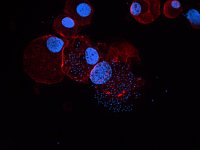Dr. Dino P. McMahon
2011. Research Fellow, Queen’s University Belfast / MLU-Halle (Germany)
2010. Royal Society Science Policy Centre (placement), London
2010. DPhil. “The molecular evolution of Strepsiptera” St Hugh’s College (Oxford)
2005. BA1st Biological Sciences. Keble College (Oxford)
Research
My research principally focuses on the ecology and evolution of host-pathogen relationships. Primarily using insects as a model system, I investigate the diverse selection pressures that act on and between closely associated individuals, particularly the interplay between hosts and pathogens in complex insect societies.
During my PhD at Oxford, I explored host specialization in Strepsiptera to understand how life history optimization drives host-parasite coevolution [1]. I further investigated the impact of parasitism on the evolution of the genotype and the phenotype [2,3].
Since my PhD I have taken up a postdoctoral fellowship at Queen’s University Belfast, focusing on the impacts and interactions of emerging RNA virus and fungal diseases (microsporidia) in eusocial hymenoptera: honeybees (Apis mellifera) and bumblebees (Bombus spp.). My research addresses the sublethal and lethal impacts of emerging pathogen diversity across biological scales (individual/colony/population). Through application of tractable methods of propagating and isolating different bee pathogens, we have conducted a range of laboratory and field-scale studies. In collaboration with colleagues at Royal Holloway University of London, Rothamsted Research, and Exeter University, we have explored the sublethal impacts of pathogens on flight behavior using radar entomology (Wolf et al. in review), and investigated the threat posed by emerging infectious diseases (EIDs) to wild pollinators. We have also explored the role of emerging disease subtypes in pollinator declines, and shown that a specific viral genotype is more virulent than the classic form: it is widespread in the landscape and in combined lab/field experiments it is quantitatively and causally linked to honeybee loss (McMahon et al. in review). These topics are addressed through a UK government-funded Insect Pollinator Initiative (IPI).
In 2014, I look forward to the opportunity of establishing a junior group, in a shared position between the Free University of Berlin and the Federal Institute for Materials Research (BAM).

|
Fluorescent microscopic image (x400) of Nosema ceranae – infected cells. DAPI-stained nuclei of host and binucleate spores in blue. Phalloidin-stained cytoskeleton in red. © D.P McMahon |
|---|
Publications
Hayward A*, McMahon DP*, Kathirithamby J. (2011) Cryptic diversity and host specificity in a parasitoid where the sexes utilize hosts from separate orders. Molecular Ecology, 20:1508-1528. *equal contributors.
McMahon DP, Hayward A, Kathirithamby J. (2011) The first molecular phylogeny of Strepsiptera (Insecta) reveals an early burst of molecular evolution correlated with the transition to endoparasitism. PLoS One, 6 (6), e21206.
McMahon DP, Hayward A, Kathirithamby J. (2009) The mitochondrial genome of the 'twisted-wing parasite' Mengenilla australiensis (Insecta, Strepsiptera): a comparative study. BMC Genomics, 10:603.
Other publications
Fries, I., Chauzat, M.P., Chen, Y.P., Doublet, V., Genersch, G., Gisder, S., Higes, M., McMahon, D.P. et al. (2013). Standard methods for Nosema research. In: Dietemann V, Ellis JD, Neumann P (Eds) The COLOSS BEEBOOK: standard methods for Apis mellifera research. Journal of Apicultural Research, 52
Williams, G. R., Alaux, C., Costa, C., Csaki, T., Doublet, V., Eisenhardt, D., Fries, I., Kuhn, R., McMahon, D.P et al. (2013). Standard methods for maintaining adult Apis mellifera in cages under in vitro laboratory conditions. In: Dietemann V, Ellis JD, Neumann P (Eds) The COLOSS BEEBOOK: standard methods for Apis mellifera research. Journal of Apicultural Research, 52
Spencer, J. S., Schoener, M., McMahon, D. P. (2013) DNA Underreplication in the majority of nuclei in the Drosophila melanogaster thorax: evidence from Suur and flow cytometry. Journal of Molecular Biology Research, 3
Kathirithamby J, Lechner GK, McMahon DP et al. 2012. A Free Ride and Lunch: Stylopization in the Solitary Hunting Wasp, Ammophila Fernaldi Murray and A. Pictipennis (Walsh) (Hymenoptera: Sphecidae) By Paraxenos Lugubris Pierce (Strepsiptera). Proceedings of the Entomological Society of Washington, 114: 464-475.
Kathirithamby J, McMahon DP, Anober-Lantican GM, Ocampo VR. 2012. An unusual occurrence of multiparasitism by two genera of Strepsiptera (Insecta) in a mango leafhopper Idioscopus clypealis (Lethierry) (Hemiptera: Cicadellidae) in the Philippines. Zootaxa, 3268:16-28.
McMahon DP, Hayward A, Kathirithamby J. 2011. Quick Guide: Strepsiptera. Current Biology, 21:R271-R27.
Kathirithamby J, Hatting JL, McMahon DP. 2010. First host record and description of female Halictophagus calcaratus Pasteels (Strepsiptera: Insecta) from South Africa. African Entomology, 18:322-327.
Kathirithamby J, Hayward H, McMahon DP et al. 2009. Conspecifics of a heterotrophic heteronomous species of Strepsiptera (Insecta) are matched by molecular characterization. Systematic Entomology, 35:234-242.




